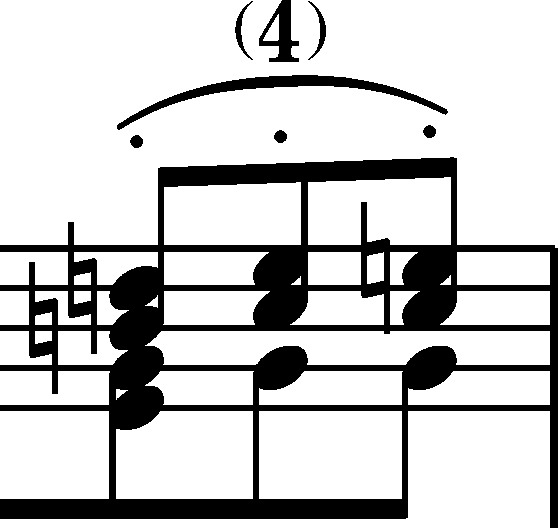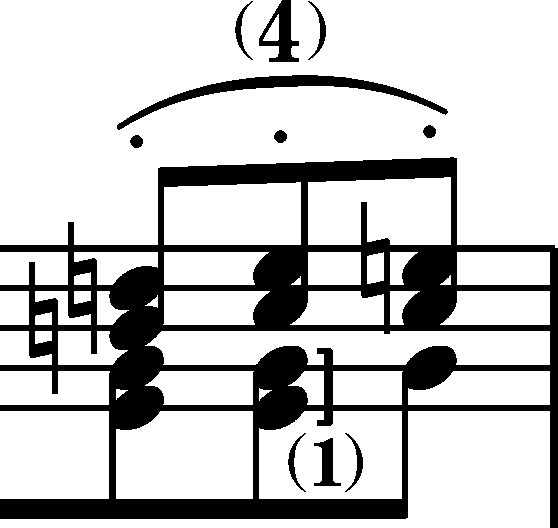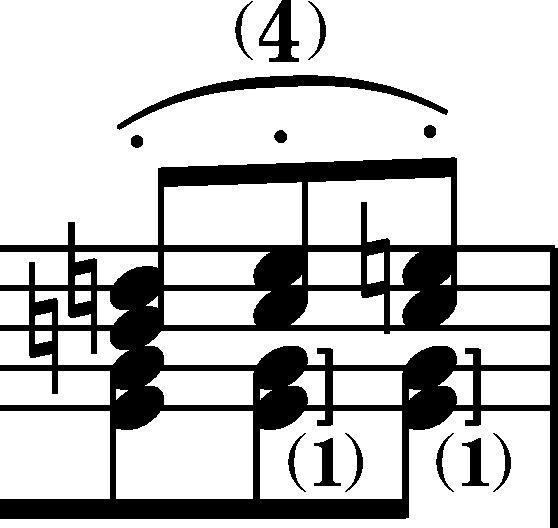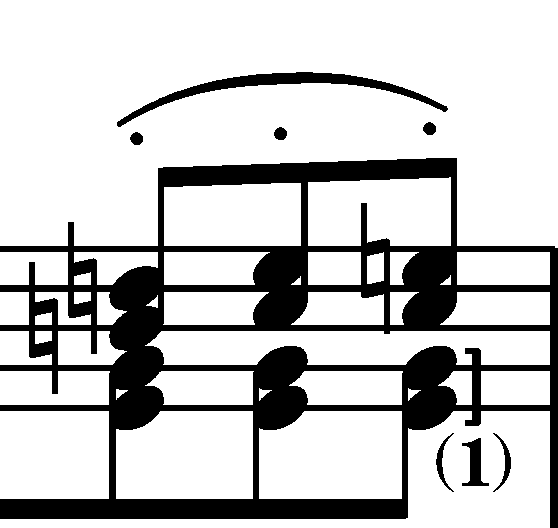



The version of A (→FE→GE1,EE1) may raise justified doubts – an erroneous omission of  before the bottom note of the last chord is, from the point of view of frequency of appearance of similar oversights, highly likely. Therefore, the decision of the revisers of GE2 and EE2 about adding this
before the bottom note of the last chord is, from the point of view of frequency of appearance of similar oversights, highly likely. Therefore, the decision of the revisers of GE2 and EE2 about adding this  is totally justified, perhaps even accurate. On the other hand, a mere possibility of a frequently committed mistake does not mean that the mistake was actually committed. These are the arguments supporting the thesis that Chopin's notation may be correct and that the composer really wanted to use a seventh chord with a simultaneous use of a perfect and altered fifth, e
is totally justified, perhaps even accurate. On the other hand, a mere possibility of a frequently committed mistake does not mean that the mistake was actually committed. These are the arguments supporting the thesis that Chopin's notation may be correct and that the composer really wanted to use a seventh chord with a simultaneous use of a perfect and altered fifth, e 1 and e2:
1 and e2:
-
The entire section, including bars 54-69, is based on a dialogue of bass and soprano (in the end doubled with thirds or octaves), against the background of a static accompaniment in the form of repeated quaver dyads. The accompaniment generally remains unchanged within a bar (with one exception in bar 62), as a result of which the melodic voices create with it sophisticated and sometimes very dissonating sounds, e.g., b
 -f1-a
-f1-a 1-b1 in bar 60 and e
1-b1 in bar 60 and e 1-g
1-g 1-b1-d2 in bars 67-68. In order to maintain this rule in bars 66-67, Chopin corrected in FE1 the 2nd quaver in bar 66, hence one can assume that also in bars 68-69, being repetition and development of bars 66-67, the rule will be preserved.
1-b1-d2 in bars 67-68. In order to maintain this rule in bars 66-67, Chopin corrected in FE1 the 2nd quaver in bar 66, hence one can assume that also in bars 68-69, being repetition and development of bars 66-67, the rule will be preserved. -
Such a chord appears in a similar context on a number of occasions in Chopin's output. The closest situation to the discussed one is to be found in the Waltz in G
 major, WN 42, bars 40-41:
major, WN 42, bars 40-41: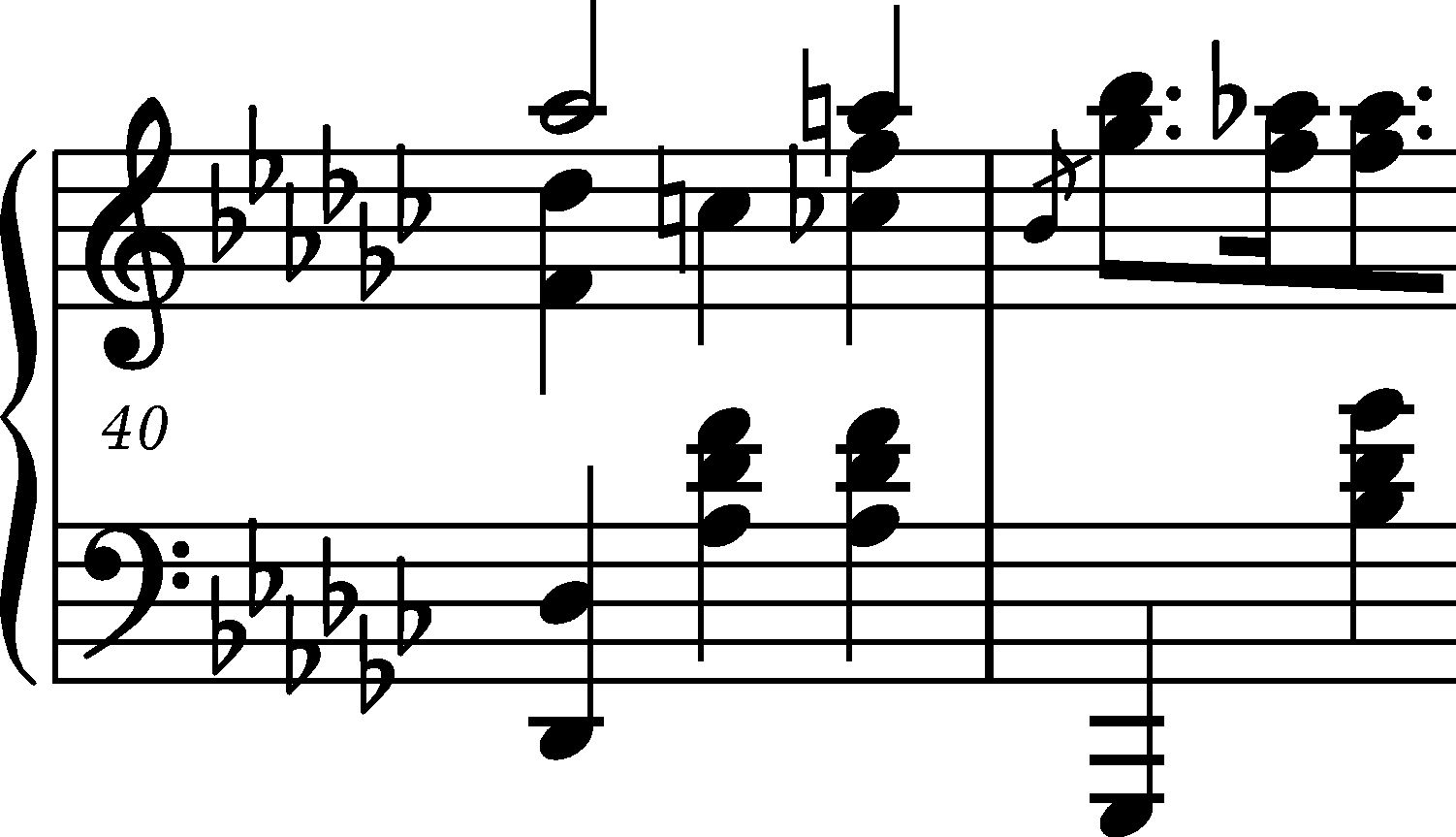 . The text of the Waltz is obvious here – it is the same in two autographs and the edition based most probably on a third one, lost. Similar harmonic progressions are also in the Concerto in F minor, Op. 21, 3rd mov., bar 260, the Mazurka in A minor, Op. 17 No. 4, bar 76, the Fantasy in F minor, Op. 49, bars 104 and 273, the Concerto in E minor, Op. 11, 2nd mov., bars 29, 43, 92).
. The text of the Waltz is obvious here – it is the same in two autographs and the edition based most probably on a third one, lost. Similar harmonic progressions are also in the Concerto in F minor, Op. 21, 3rd mov., bar 260, the Mazurka in A minor, Op. 17 No. 4, bar 76, the Fantasy in F minor, Op. 49, bars 104 and 273, the Concerto in E minor, Op. 11, 2nd mov., bars 29, 43, 92).
The version written by the composer is – as it can be seen – compatible with the type of musical narrative prevailing in the respective section of the Polonaise, hence it fits into the Chopin harmonic style. Therefore, there are no reasons not to include it in the main text.
The issue of the sound of the last chord of the bar is directly connected with the pencilled annotations in FEJ. The annotations – probably performed by Chopin – most probably concern deleting the bottom notes in the last two chords. According to us, this measure was supposed not only to enhance the performance, yet also, and maybe above all, to avoid a simultaneous transition of the perfect and altered fifth of the seventh chord to the third of the next chord, which is more evident in the Polonaise than in the aforementioned examples. It is even more likely, as Chopin used an analogous solution in a very similar situation in the Polonaise in C minor, Op. 40 No. 2, bar 14. Considering also these possibilities of interpretation of the entry in FEJ as fingering and their combination offers the following possible interpretations:
According to us, the aforementioned practically constitutes an exhaustive set of interpretation possibilities.
Compare the passage in the sources »
category imprint: Interpretations within context; Differences between sources; Corrections & alterations
issues: EE revisions, Accidentals in different octaves, GE revisions, Inaccuracies in A
notation: Pitch






